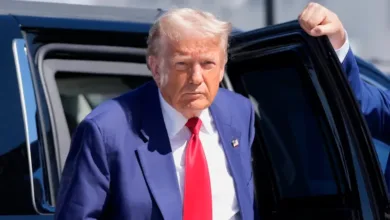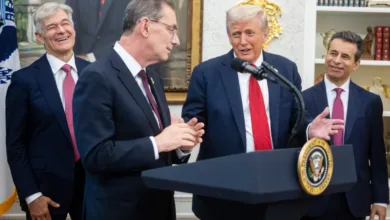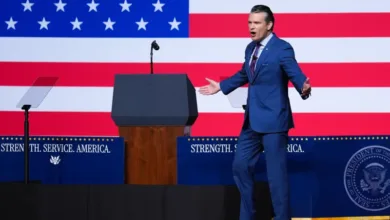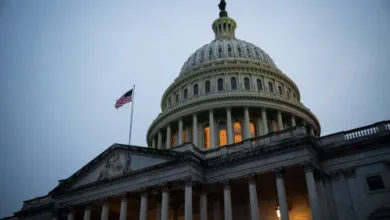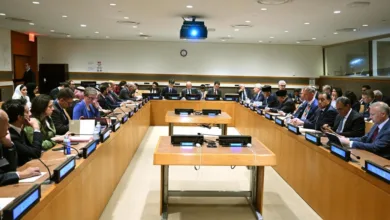“Washington on Fire: Has Trust Between the FBI and Citizens Broken Forever?”؟

Tariffs have always been a controversial tool in U.S. economic policy. Former President Donald Trump made them a centerpiece of his “America First” strategy, arguing that imposing tariffs on foreign goods would protect American industries and restore manufacturing jobs. While the policy was praised by some sectors, it also sparked resistance among workers, businesses, and global trading partners.
As Breaking News coverage highlights ongoing disputes, a new question is emerging: will worker rebellion against Trump’s tariffs undermine the very economy they were meant to strengthen?
The Logic Behind Trump’s Tariffs
Trump justified tariffs as a way to level the playing field. He argued that foreign competitors, especially China, were unfairly benefiting from subsidies, weak labor protections, and currency manipulation. By taxing imports, Trump sought to encourage domestic production and reduce America’s trade deficit.
Initially, many workers welcomed the idea. The promise of more jobs in steel, aluminum, and manufacturing appealed to communities hit hard by globalization. Trump News outlets celebrated tariffs as a bold stand against decades of failed trade policies.
The Reality for Workers
However, the reality proved more complicated. While some industries saw modest gains, others suffered from rising costs. American farmers, for example, faced retaliatory tariffs that cut off key export markets. Manufacturers relying on imported components saw production costs skyrocket.
Workers on the ground began to feel squeezed. Higher prices for raw materials meant fewer jobs, reduced overtime, and in some cases, layoffs. Instead of protecting employment, tariffs inadvertently endangered it. Reports in U.S News detailed how communities that had supported Trump’s trade wars were experiencing economic pain.
Worker Resistance
The frustration turned into resistance. Labor unions, once cautiously optimistic about tariffs, began voicing concern. Workers protested outside factories, demanding wage protection and relief from rising living costs. Some openly questioned whether Trump’s policies were designed to protect them or to score political points.
This worker backlash represents a unique challenge for Republicans. The party has traditionally relied on business-friendly policies, yet Trump’s tariffs introduced an interventionist approach that upset supply chains. The conflict between ideology and reality has fueled internal debates within the GOP.
Global Consequences
Tariffs not only reshaped the U.S. economy but also strained international relations. China, the European Union, and Canada retaliated with their own tariffs, escalating into a global trade war. For American exporters, this meant shrinking markets and reduced competitiveness.
World coverage highlighted how trade disputes disrupted global supply chains. Products from automobiles to agricultural goods became more expensive, and U.S. allies expressed frustration at being caught in the crossfire.
The economic costs were substantial. Analysts estimated billions in losses for American farmers, prompting the government to issue subsidies to offset damages. Critics argued that these payouts contradicted the original promise of tariffs: making the U.S. economy more self-reliant.
Political Fallout
For Trump and his allies, the worker rebellion poses a serious political threat. The image of being the “champion of the American worker” is weakened when those very workers protest against trade policies. Democrats have seized on this narrative, portraying tariffs as reckless and harmful.
At the same time, some Republicans remain loyal to Trump’s vision. They argue that short-term pain is necessary for long-term gain, and that tariffs are a strategic tool to confront China’s economic rise. But as the 2026 elections approach, the political cost of alienating workers may outweigh theoretical benefits.
Media Divide
Media coverage reflects America’s deep polarization. Conservative commentators emphasize the need for strong trade policies and frame worker rebellion as temporary dissatisfaction. Liberal outlets highlight personal stories of farmers and factory workers struggling under tariff-related hardships. Neutral observers note that the truth lies somewhere in between — tariffs helped some but hurt many.
The role of News outlets in shaping the debate cannot be overstated. Whether workers are portrayed as victims of bad policy or as patriots enduring necessary sacrifices depends on the political lens of the reporting.
Long-Term Economic Risks
If worker rebellion continues, it could destabilize key industries and weaken consumer confidence. Protests, strikes, and political pressure might force future administrations to reverse tariff policies. The uncertainty alone creates risk for investors and companies planning long-term strategies.
Economists warn that persistent trade wars can lead to inflation, slower growth, and reduced innovation. In the worst-case scenario, tariffs could push the U.S. toward recession. For ordinary Americans, this means fewer jobs, stagnant wages, and higher prices at the checkout counter.
Trump’s tariffs were designed to protect American workers, but the reality has been far more complex. While some industries benefited, others suffered, leading to growing resistance among the very workers tariffs were supposed to help. The rebellion underscores the unpredictable consequences of trade wars and the difficulty of balancing national interests with global realities.
As the 2026 elections approach, the question remains: will worker frustration with tariffs weaken Trump’s political influence and threaten the broader U.S. economy? The answer could shape America’s future for years to come.
Trump’s tariffs aimed to defend U.S. workers and industries, but their impact has been mixed. Rising costs, retaliatory trade measures, and worker unrest threaten to undermine the policy’s original goals. As labor resistance grows, the political and economic risks for the GOP increase, making tariffs a defining issue for the 2026 elections.
